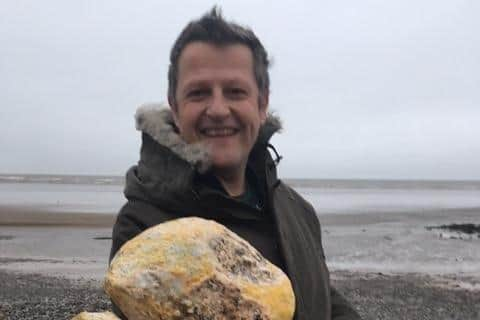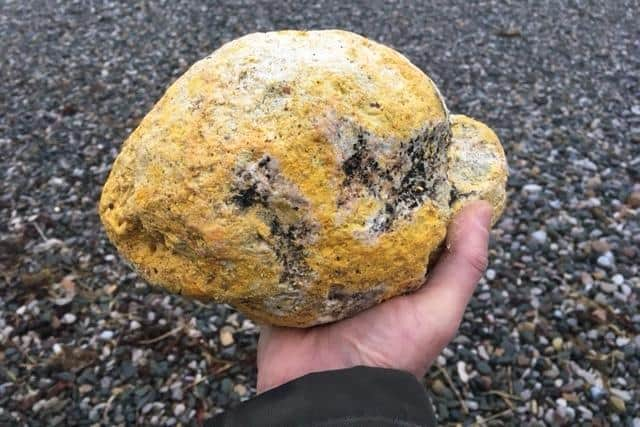Man waits to hear if rock found on Morecambe beach is valuable whale vomit worth £40k
and live on Freeview channel 276
Jonathan Pearson, 51, a photographer from Morecambe, spotted the yellowy white waxy substance and recognised the description as possible ambergris as it was detailed in a story in 2016 where Gary and Angela Williams, from Overton, found a smelly rock on Middleton Sands beach.
Jonathan said: “I was walking along the promenade today (Tuesday), as I do most days, when I happened to glance down at the beach near The Midland hotel and saw it.
Advertisement
Hide AdAdvertisement
Hide Ad"I went down to inspect it and grabbed it. It is a yellowy white waxy material and is broken into two pieces, it’s quite heavy and weighs 2kg. I reckon it’s worth about £40k if it proves to be ambergris.


"I want to find a buyer for it! It's the first time I’ve found something potentially valuable like this. I was very excited and happy!”
Ambergris, sometimes known as whale vomit, is used by perfumers to make scent last longer and can fetch very high prices because of its rarity.
A 2.7kg lump was found on the shore in Morecambe in 2013 and was valued at up to £120,000, but this later turned out not to be ambergris.
Advertisement
Hide AdAdvertisement
Hide AdIt is not known whether the greyish lump found on Middleton Beach in 2016 was verified as genuine.


Jonathan has sent pictures of the specimen he thinks is ambergris to a site called ambergrisconnect.com and the reply said: “We got your photos, but we are sorry to inform you that it is not ambergris.
"We are only expert in ambergris, not in various material found in the sea, so we cannot tell you exactly what it is.
“Generally, when it is not ambergris: we get photos of animal fat - dried part of an animal – spermaceti – black amber (no value) – pitch coke – limestone – pumice stone – clinker – sponge - red shale – sea cucumber - wax – resin – gum – candle – paraffine – flint…
Advertisement
Hide AdAdvertisement
Hide Ad“We are pleased to send you our documentation on ambergris in order to help you to know more about it.
"P.S : ambergris is never yellow.”
Jonathan has contacted Lancaster University to ask them to test it and is now waiting for them to get back to him.
He will have to get the waxy stone verified as ambergris by an expert before he can sell it.
Ambergris is a rust-proof waxy substance released from the intestines of the sperm whale spontaneously or after death.
Advertisement
Hide AdAdvertisement
Hide AdFreshly expelled, amber has an unpleasant odor, a blackish color and a soft consistency.
Under the effect of the sea water and the atmosphere, the amber lightens gradually, becomes silver gray to yellow gold, hardens, the smell is refined, becomes softer and very pleasant and at final, it becomes almost white.
Ambergris is one of the rare materials of animal origin used in the composition of high-end perfumes.
It is used in perfumery in the form of dyes (and sometimes infusions) obtained after grinding of amber and maceration in the pure alcohol for several months.